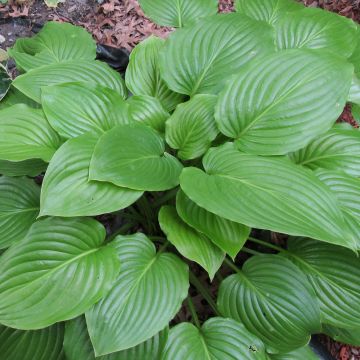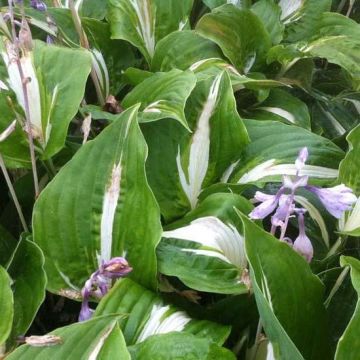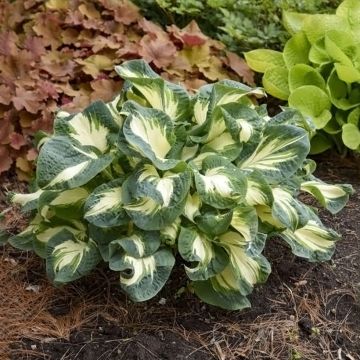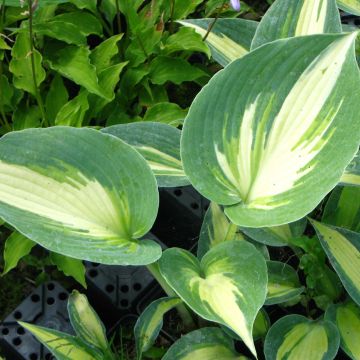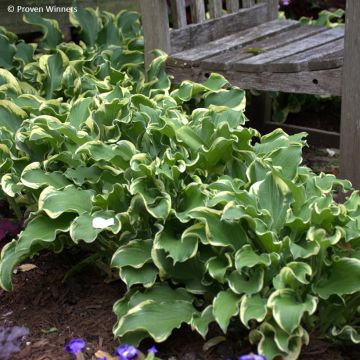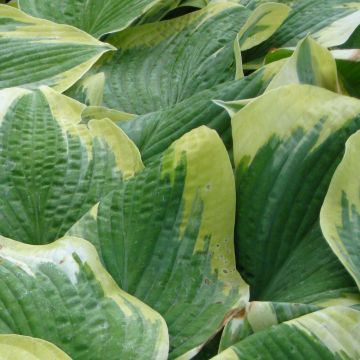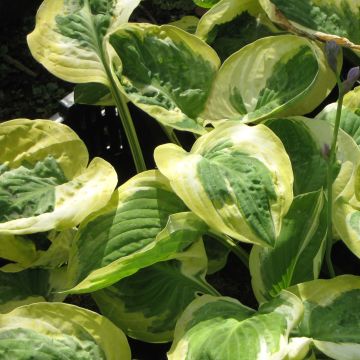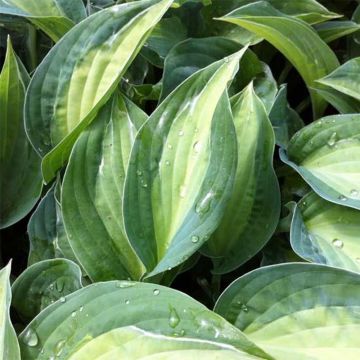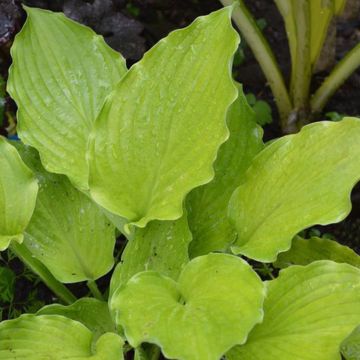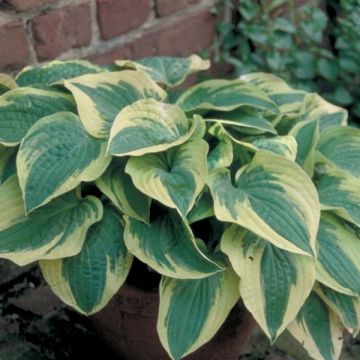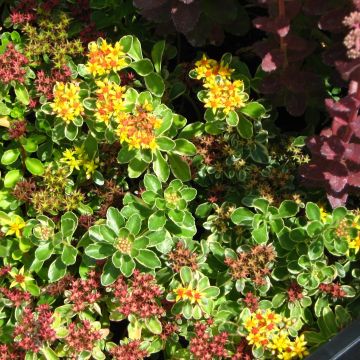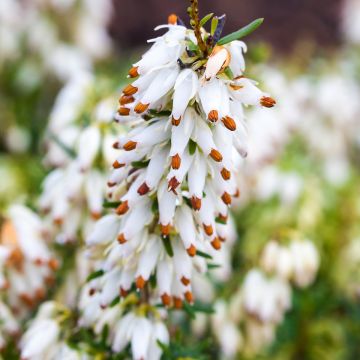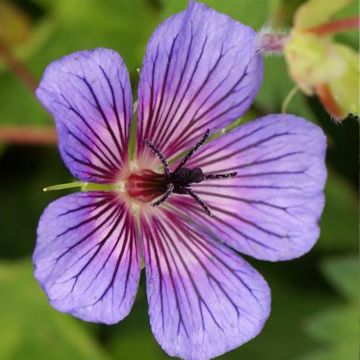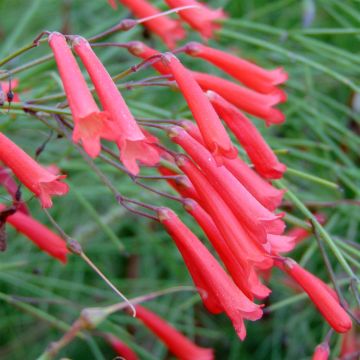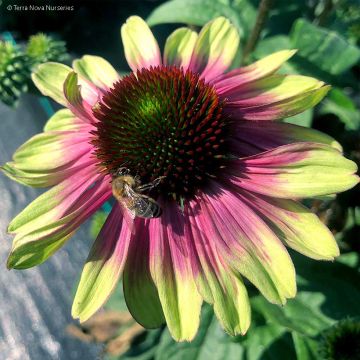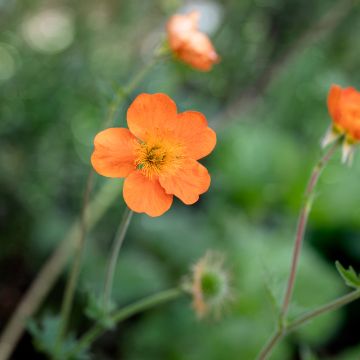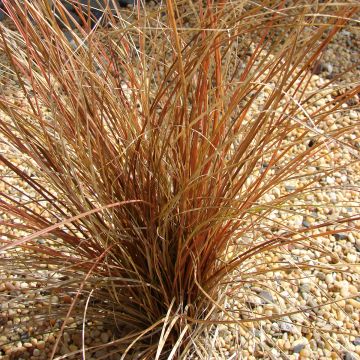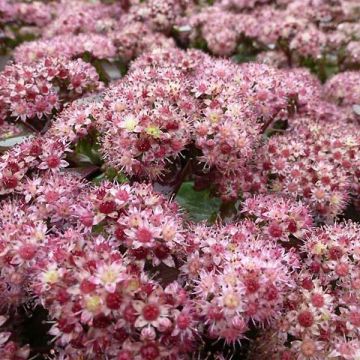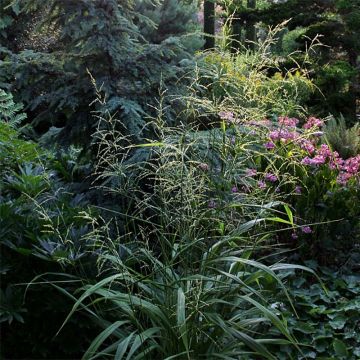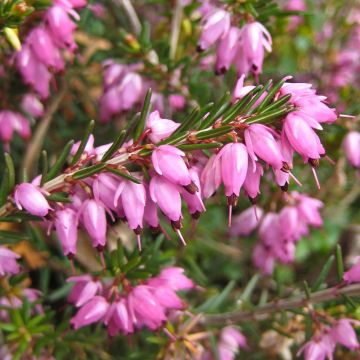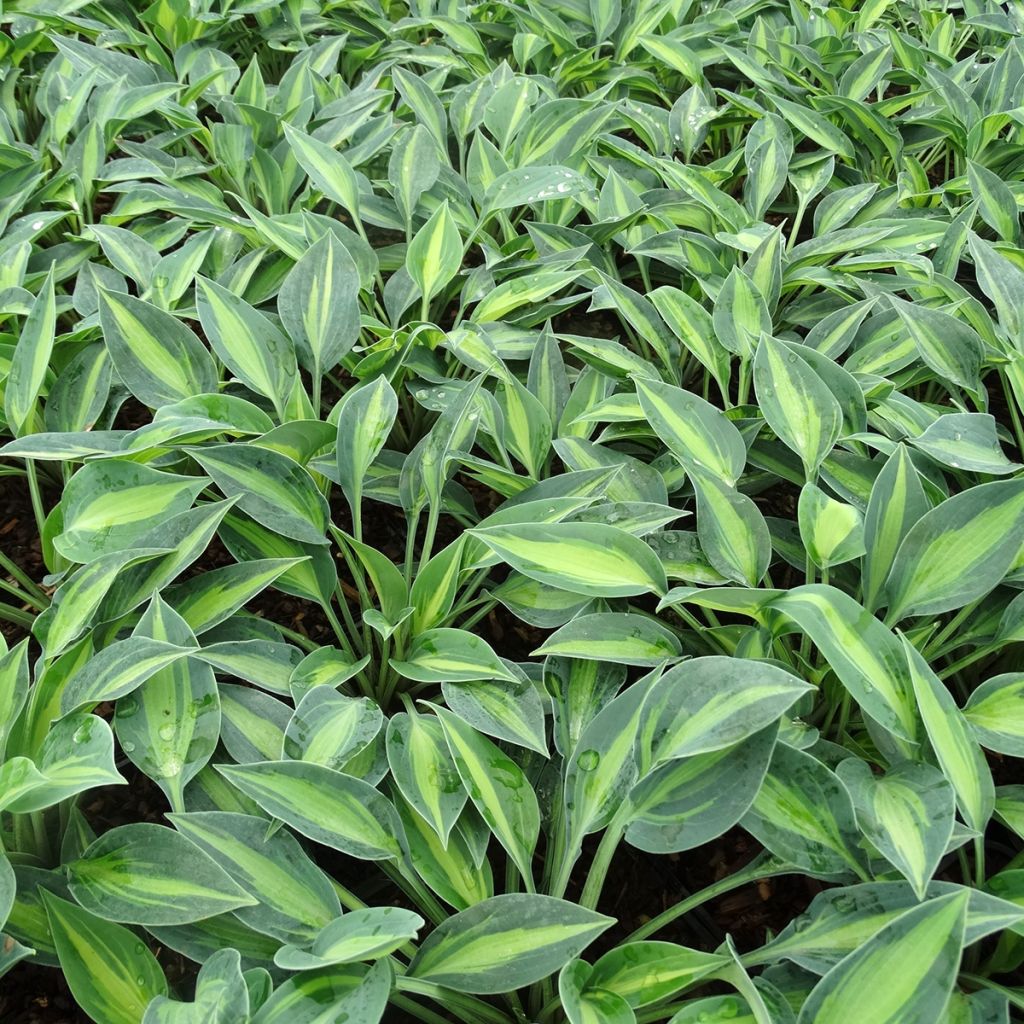

Hosta Stand by Me
Hosta Stand by Me
Hosta Stand by Me
Funkia, Plantain Lily
This item cannot be shipped to the selected country
Delivery charge from €5.90
More information
Schedule delivery date,
and select date in basket
This plant carries a 12 months recovery warranty
More information
We guarantee the quality of our plants for a full growing cycle, and will replace at our expense any plant that fails to recover under normal climatic and planting conditions.
From €5.90 for pickup delivery and €6.90 for home delivery
Express home delivery from €8.90.
Does this plant fit my garden?
Set up your Plantfit profile →
Description
Hosta Stand by Me, a magnificent descendant of the Hosta June, has inherited its beautiful range of colours, but this variety has a very different habit, forming a compact clump with more upright leaves of a different shape. On these leaves, the bluish-green is extensively variegated with cream and golden-yellow flames in the centre, creating a very beautiful two-tone effect. Ash grey flowers accompany the foliage in July-August. Easy to grow in moist soil and partial shade, this hosta is a reliable and vigorous variety that brings an exotic and refined touch to the garden. It will look stunning in a contemporary or Japanese-style border, and of course in a large pot on a shaded terrace.
This Hosta, or Funkia Stand by Me, is a fully hardy perennial from the liliaceae or hostaceae family depending on the classification. The plant forms a profusion of leaves from spring onwards. When fully grown in 5 or 6 years, it will reach approximately 35cm (14in) in height and 50cm (20in) in width, if the conditions are right. It is a long-lived variety, with elongated heart-shaped leaves that measure up to 20cm (8in) in length and 15cm (6in) in width. The lamina is thick, slightly concave, and traversed by numerous parallel veins. Flowering usually occurs in July-August, in the form of elongated pale mauve bells, clustered towards the top of peduncles that emerge widely from the foliage. The above-ground vegetation is deciduous, emerging from the ground in spring and disappearing in winter.
Traditionally, hostas are planted under deciduous trees, in moist borders or rockeries, and especially near water features. It is a perennial that can also be grown in containers and even as a standalone plant. Hosta Stand by Me pairs well with ferns, foamflowers, and astilbes, for example, as these plants appreciate similar conditions. To highlight its extraordinary foliage, combine it with yellow to golden false grasses, preferably Carex and Hakonechloa. Also consider spring bulbs, Brunneras, and creeping bugles as companion plants.
Report an error about the product description
Hosta Stand by Me in pictures
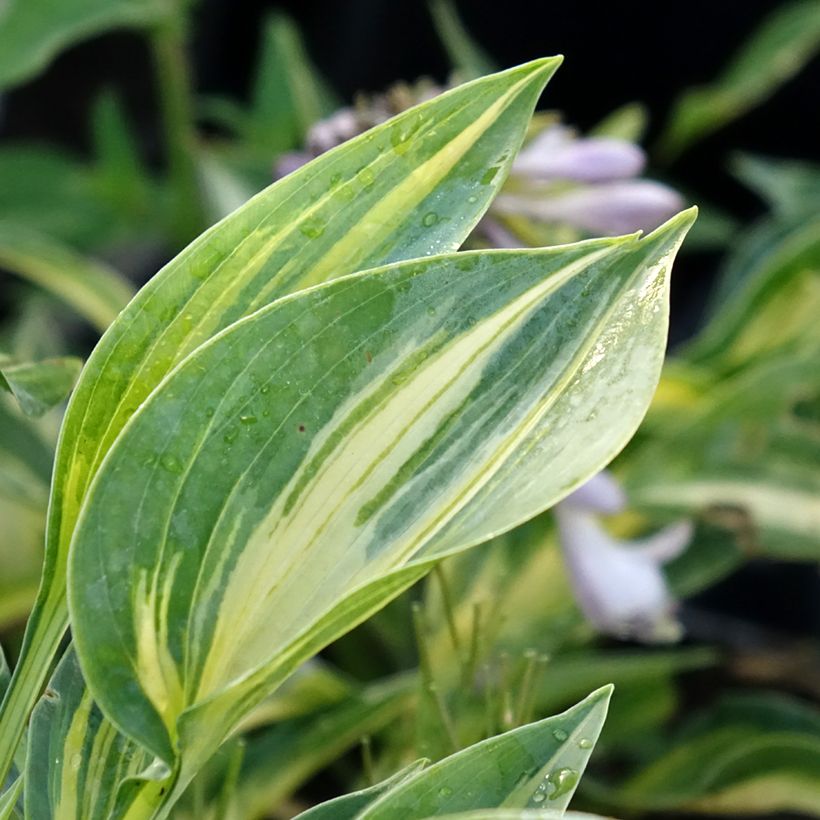

Flowering
Foliage
Plant habit
Botanical data
Hosta
Stand by Me
Liliaceae - Hostaceae
Funkia, Plantain Lily
Cultivar or hybrid
Other Hostas - Plantain Lilies
Planting and care
Hostas are best planted in spring or autumn. Hostas prefer a deep, fertile, humus-rich, loose soil, preferably neutral to acidic (at least low in limestone), and moist to wet throughout the year. Plant them in partial shade or dappled shade, and in a sheltered location away from strong winds.
Prepare a planting hole of 20cm (8in) x 20cm (8in) x 20cm (8in). If your soil is heavy, mix equal parts compost with crumbled soil, partially backfill the hole, and place your plant in a clump so that the top of the clump is covered with 3cm (1in) of soil. Adding a slow-release fertiliser (such as bonemeal) will nourish your plant during its rooting period without the risk of burning. Make sure to position the collar well above ground level. Firmly tamp the soil and water thoroughly to eliminate air pockets. If the weather is dry, you will need to water regularly for a few weeks to facilitate the establishment of your plant. Also, water regularly during dry summers.
With their shared preference for moist locations, slugs and snails never stray far from hostas. Even though blue or variegated hostas often have thicker and tougher foliage, which is less appetising to slugs, these plants still need protection from gastropods. Protect your hosta plants by surrounding them with eggshells, coffee grounds, wood chips, or any dry and rough natural substance that repels them. Hedgehogs are the gardener's best allies in the fight against gastropods, as they don't till the soil like chickens do and they don't attack the tender green shoots of young plants. Finally, some plants have a repulsive odour to slugs, such as wormwood and garlic.
Planting period
Intended location
Care
This item has not been reviewed yet - be the first to leave a review about it.
Potted perennials
Haven't found what you were looking for?
Hardiness is the lowest winter temperature a plant can endure without suffering serious damage or even dying. However, hardiness is affected by location (a sheltered area, such as a patio), protection (winter cover) and soil type (hardiness is improved by well-drained soil).

Photo Sharing Terms & Conditions
In order to encourage gardeners to interact and share their experiences, Promesse de fleurs offers various media enabling content to be uploaded onto its Site - in particular via the ‘Photo sharing’ module.
The User agrees to refrain from:
- Posting any content that is illegal, prejudicial, insulting, racist, inciteful to hatred, revisionist, contrary to public decency, that infringes on privacy or on the privacy rights of third parties, in particular the publicity rights of persons and goods, intellectual property rights, or the right to privacy.
- Submitting content on behalf of a third party;
- Impersonate the identity of a third party and/or publish any personal information about a third party;
In general, the User undertakes to refrain from any unethical behaviour.
All Content (in particular text, comments, files, images, photos, videos, creative works, etc.), which may be subject to property or intellectual property rights, image or other private rights, shall remain the property of the User, subject to the limited rights granted by the terms of the licence granted by Promesse de fleurs as stated below. Users are at liberty to publish or not to publish such Content on the Site, notably via the ‘Photo Sharing’ facility, and accept that this Content shall be made public and freely accessible, notably on the Internet.
Users further acknowledge, undertake to have ,and guarantee that they hold all necessary rights and permissions to publish such material on the Site, in particular with regard to the legislation in force pertaining to any privacy, property, intellectual property, image, or contractual rights, or rights of any other nature. By publishing such Content on the Site, Users acknowledge accepting full liability as publishers of the Content within the meaning of the law, and grant Promesse de fleurs, free of charge, an inclusive, worldwide licence for the said Content for the entire duration of its publication, including all reproduction, representation, up/downloading, displaying, performing, transmission, and storage rights.
Users also grant permission for their name to be linked to the Content and accept that this link may not always be made available.
By engaging in posting material, Users consent to their Content becoming automatically accessible on the Internet, in particular on other sites and/or blogs and/or web pages of the Promesse de fleurs site, including in particular social pages and the Promesse de fleurs catalogue.
Users may secure the removal of entrusted content free of charge by issuing a simple request via our contact form.
The flowering period indicated on our website applies to countries and regions located in USDA zone 8 (France, the United Kingdom, Ireland, the Netherlands, etc.)
It will vary according to where you live:
- In zones 9 to 10 (Italy, Spain, Greece, etc.), flowering will occur about 2 to 4 weeks earlier.
- In zones 6 to 7 (Germany, Poland, Slovenia, and lower mountainous regions), flowering will be delayed by 2 to 3 weeks.
- In zone 5 (Central Europe, Scandinavia), blooming will be delayed by 3 to 5 weeks.
In temperate climates, pruning of spring-flowering shrubs (forsythia, spireas, etc.) should be done just after flowering.
Pruning of summer-flowering shrubs (Indian Lilac, Perovskia, etc.) can be done in winter or spring.
In cold regions as well as with frost-sensitive plants, avoid pruning too early when severe frosts may still occur.
The planting period indicated on our website applies to countries and regions located in USDA zone 8 (France, United Kingdom, Ireland, Netherlands).
It will vary according to where you live:
- In Mediterranean zones (Marseille, Madrid, Milan, etc.), autumn and winter are the best planting periods.
- In continental zones (Strasbourg, Munich, Vienna, etc.), delay planting by 2 to 3 weeks in spring and bring it forward by 2 to 4 weeks in autumn.
- In mountainous regions (the Alps, Pyrenees, Carpathians, etc.), it is best to plant in late spring (May-June) or late summer (August-September).
The harvesting period indicated on our website applies to countries and regions in USDA zone 8 (France, England, Ireland, the Netherlands).
In colder areas (Scandinavia, Poland, Austria...) fruit and vegetable harvests are likely to be delayed by 3-4 weeks.
In warmer areas (Italy, Spain, Greece, etc.), harvesting will probably take place earlier, depending on weather conditions.
The sowing periods indicated on our website apply to countries and regions within USDA Zone 8 (France, UK, Ireland, Netherlands).
In colder areas (Scandinavia, Poland, Austria...), delay any outdoor sowing by 3-4 weeks, or sow under glass.
In warmer climes (Italy, Spain, Greece, etc.), bring outdoor sowing forward by a few weeks.

































